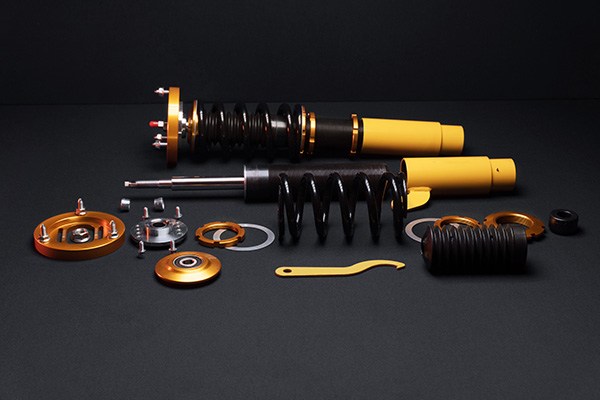
If you've ever felt like your car isn't driving as smoothly as it should, you might have wondered about the components involved in your vehicle's suspension system. Two critical parts of this system are shock absorbers and struts, but what exactly are they, and how do they differ?
What Are Shock Absorbers?
Shock absorbers, commonly known as shocks, are hydraulic devices designed to absorb and dampen the shock impulses from the road surface. They control the impact and rebound movement of your vehicle's springs and suspension, ensuring that the tires maintain contact with the road surface for optimum control and safety.
What Are Struts?
Struts, on the other hand, are a structural part of the suspension system. They not only perform the function of shock absorption but also provide structural support to the vehicle's suspension. This means struts support the weight of the vehicle, maintain wheel alignment, and are integral to the steering mechanism.
Key Differences Between Shock Absorbers and Struts
1. Function and Design
The primary difference lies in their function and design. Shock absorbers are designed solely to absorb and dampen road bumps, whereas struts integrate multiple functions into a single assembly. Struts not only absorb the vehicle's movement but also support the weight and play a crucial role in the steering system.
2. Structural Role
Struts are a fundamental part of the suspension structure and influence the vehicle's alignment and ride height. Shock absorbers, in contrast, do not bear the vehicle's weight and primarily manage the rebound and compression of the suspension springs.
3. Replacement and Cost
Replacing struts is generally more expensive and labor-intensive than replacing shock absorbers. This is because struts involve a more complex structure and additional components like the spring, which need to be removed and replaced together.
Signs That Your Shocks or Struts Need Replacement
Bumpy Ride
If you start noticing a bumpy ride, where every pothole or road irregularity feels exaggerated, it's a clear sign that your shocks or struts might be worn out. This can lead to a decrease in vehicle stability and comfort.
Poor Handling
Worn shocks or struts can significantly affect your vehicle's handling. You might experience excessive body roll during turns, swaying, or drifting, indicating that the suspension components are no longer providing adequate support.
Uneven Tire Wear
Both shocks and struts play a vital role in maintaining proper tire contact with the road. Uneven tire wear often indicates that your suspension system isn't functioning correctly, leading to poor alignment and contact issues.
Benefits of Replacing Worn Shocks and Struts
Improved Vehicle Stability
Replacing worn shocks and struts significantly improves vehicle stability, providing a smoother and safer ride. New components ensure better control and handling, especially during emergency maneuvers.
Enhanced Safety
Properly functioning shocks and struts are critical for maintaining vehicle safety. They ensure that your tires maintain consistent contact with the road, improving braking efficiency and reducing the risk of accidents.
Prolonged Tire Life
Replacing worn shocks and struts helps maintain proper tire alignment and contact, leading to even tire wear and prolonging the life of your tires. This can save you money on tire replacements and improve overall vehicle performance.
Ensure your vehicle's suspension is in top shape. Book an appointment with RM Automotive and let our skilled technicians take care of your car's suspension.